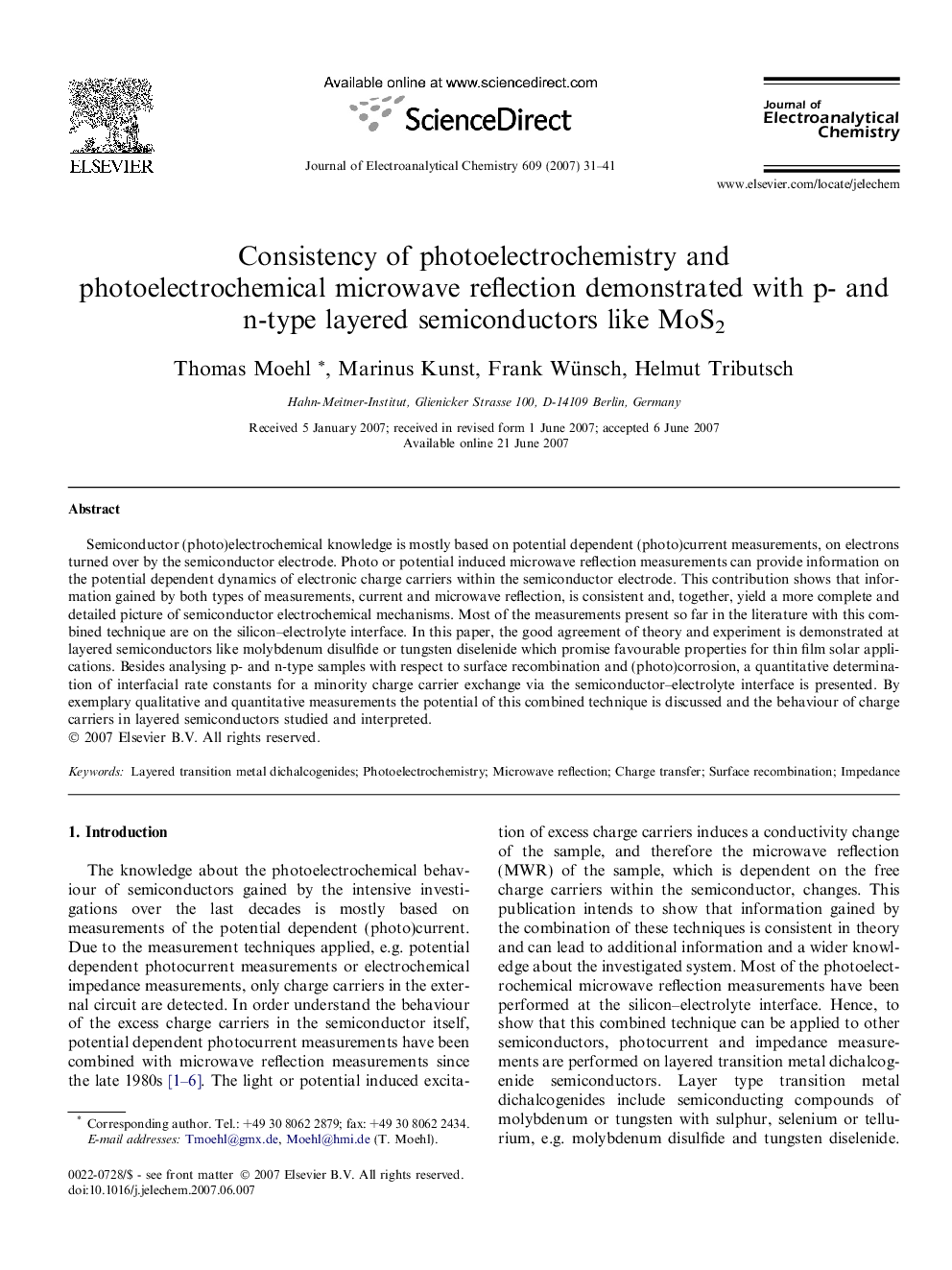| Article ID | Journal | Published Year | Pages | File Type |
|---|---|---|---|---|
| 220882 | Journal of Electroanalytical Chemistry | 2007 | 11 Pages |
Semiconductor (photo)electrochemical knowledge is mostly based on potential dependent (photo)current measurements, on electrons turned over by the semiconductor electrode. Photo or potential induced microwave reflection measurements can provide information on the potential dependent dynamics of electronic charge carriers within the semiconductor electrode. This contribution shows that information gained by both types of measurements, current and microwave reflection, is consistent and, together, yield a more complete and detailed picture of semiconductor electrochemical mechanisms. Most of the measurements present so far in the literature with this combined technique are on the silicon–electrolyte interface. In this paper, the good agreement of theory and experiment is demonstrated at layered semiconductors like molybdenum disulfide or tungsten diselenide which promise favourable properties for thin film solar applications. Besides analysing p- and n-type samples with respect to surface recombination and (photo)corrosion, a quantitative determination of interfacial rate constants for a minority charge carrier exchange via the semiconductor–electrolyte interface is presented. By exemplary qualitative and quantitative measurements the potential of this combined technique is discussed and the behaviour of charge carriers in layered semiconductors studied and interpreted.
